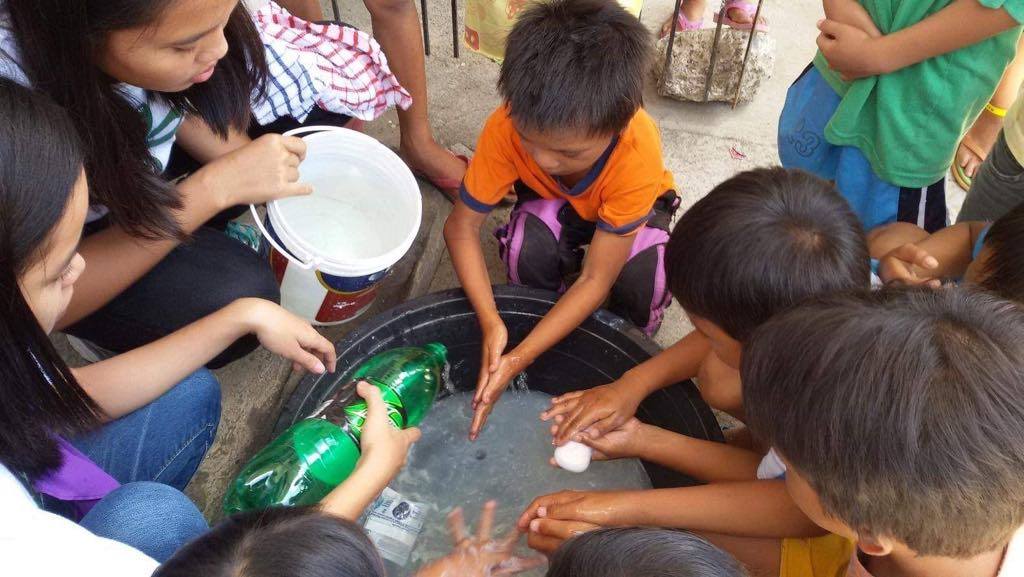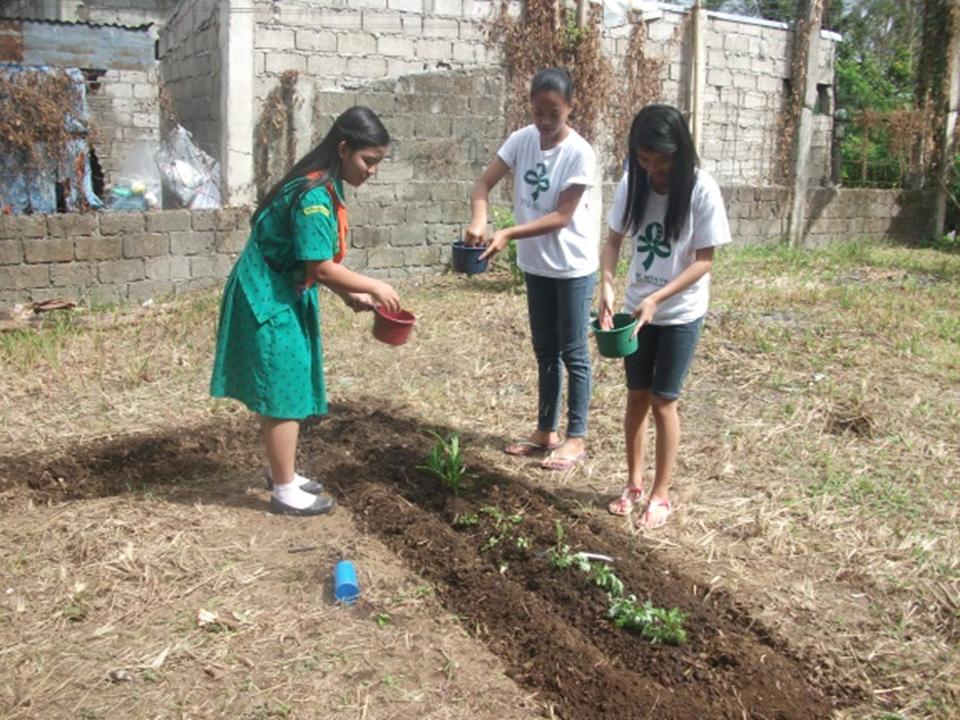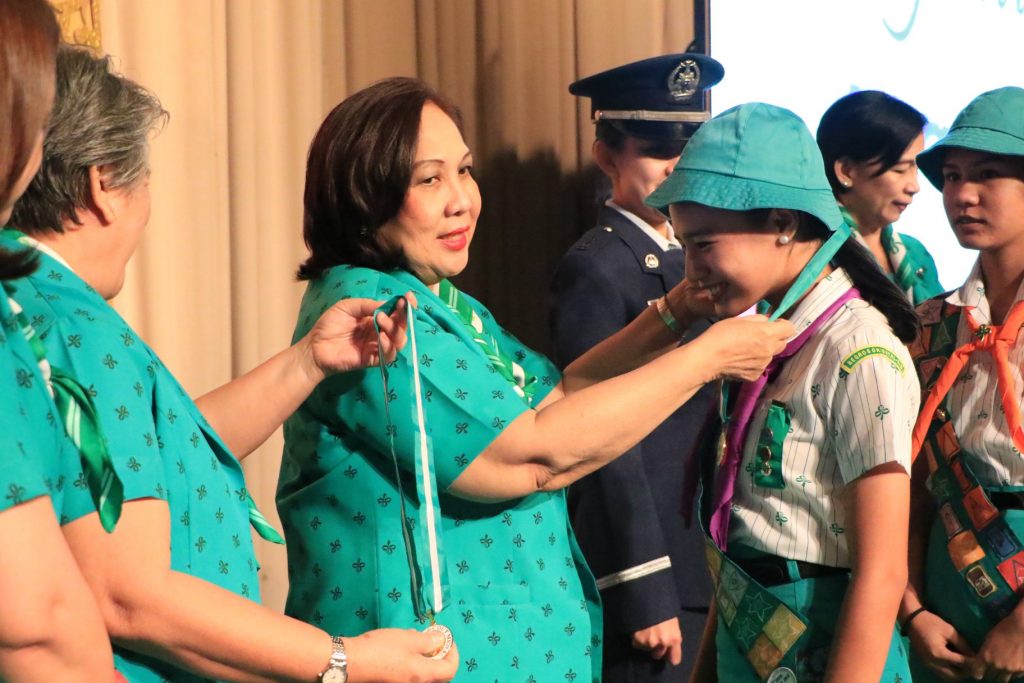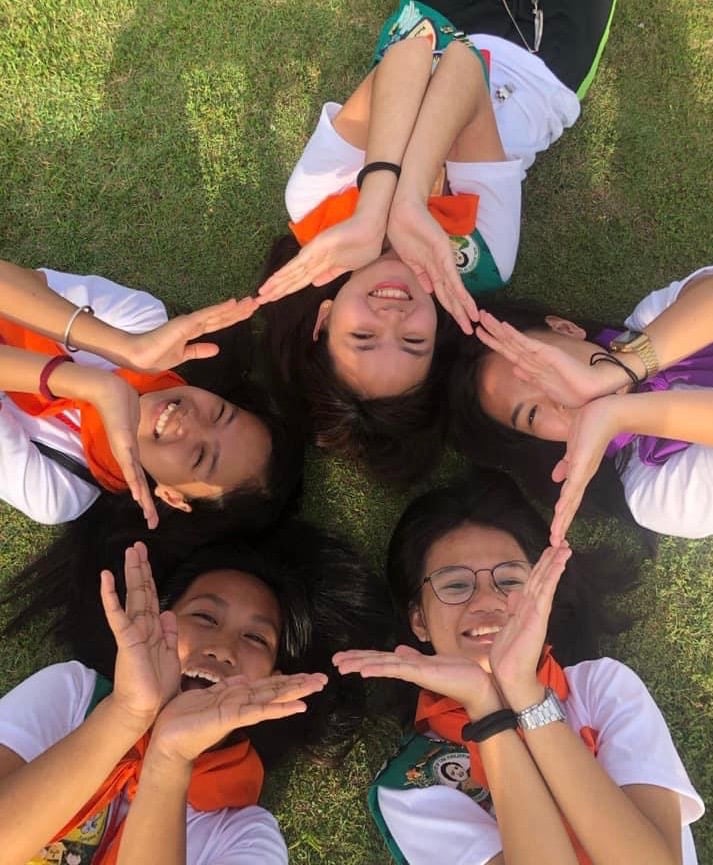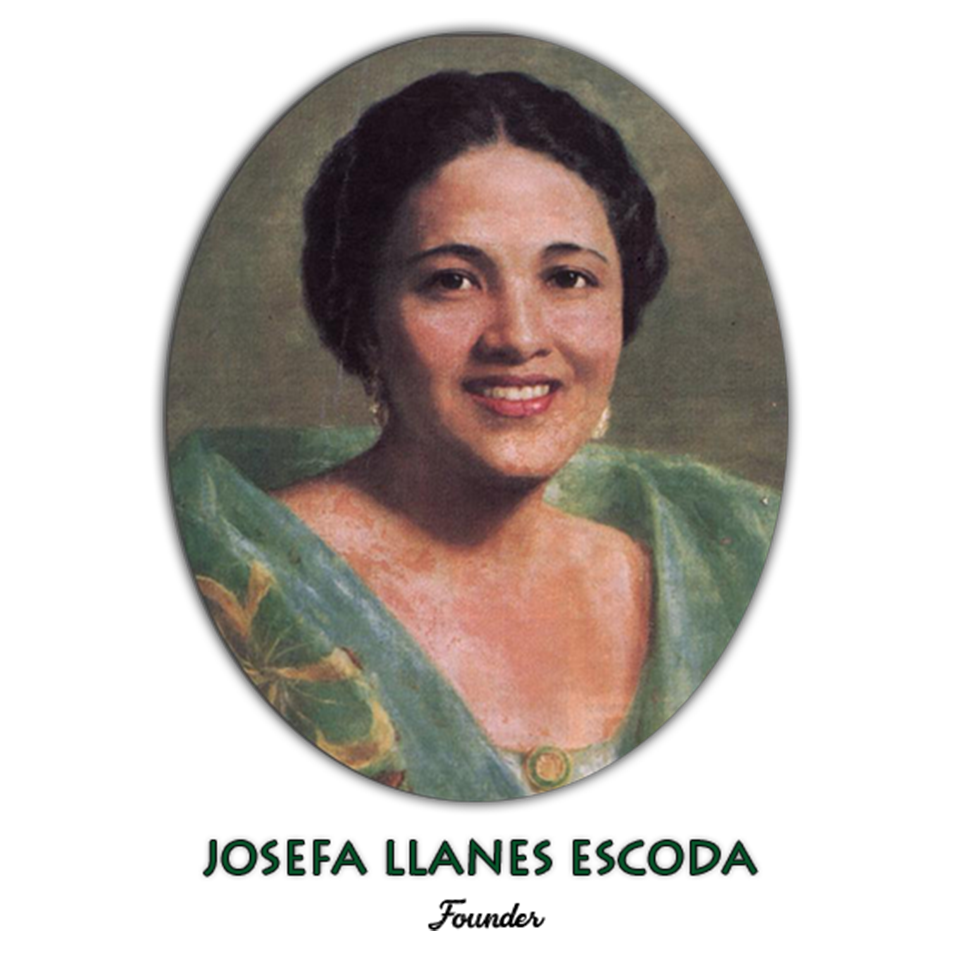The Chief Girl Scout Medal Scheme
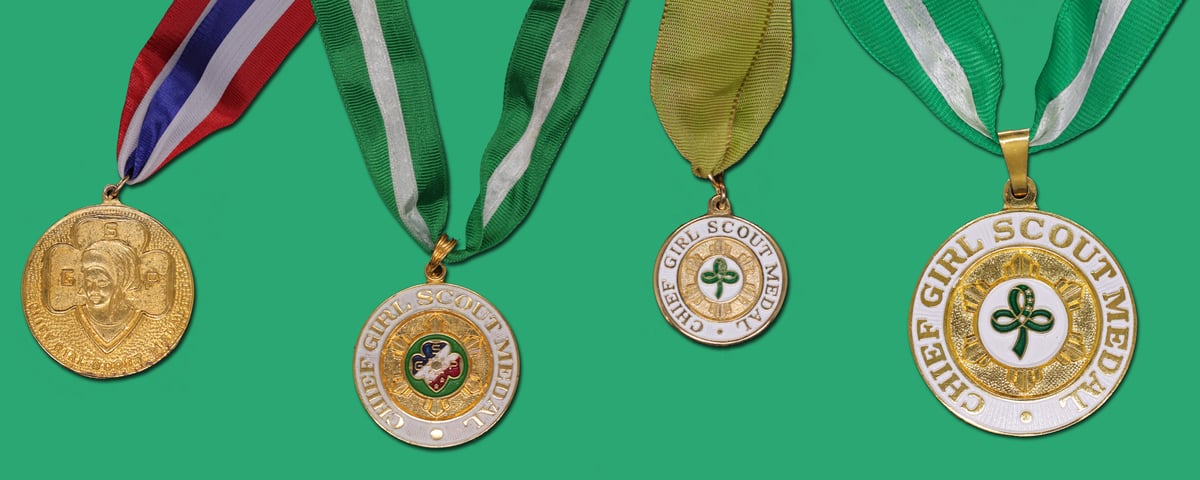
HOW IT BEGAN
In 1975, the Program Division of the Girl Scouts of the Philippines designed the Chief Girl Scout Medal Scheme under the aegis of the Program Committee. It was approved by the Central Board and circularized to the field on July 6, 1976 under NHQ Circular No. 18.
The Chief Girl Scout Medal Scheme highlights the Girl Scout’s role in nation building as exemplified by the Chief Girl Scout and her distinguished leadership and vital contribution to nation building. Under the GSP Charter, Executive Order 267, the Woman President of the Philippines or the First Lady shall be the Chief Girl Scout of the Girl Scouts of the Philippines.
Three Senior Girl Scouts from the Visayas Region were the first recipients of the Chief Girl Scout Medal. The first presentation ceremony was held in 1977 at the GSP Auditorium, Manila.
It took another two years before the Scheme finally took off on a nationwide scale.
In the span of thirty-seven years (1976-2020) 7,177 Senior and Cadet Girl Scouts have worked on the Scheme and awarded the Chief Girl Scout Medal. Amongst the medalists, we can now proudly count lawyers, doctors, teachers, business executives, nurses, outstanding community leaders, and others in their chosen field.
Today, as more and more Senior Girl Scouts undertake the Chief Girl Scout Medal Scheme, the role of Girl Scouts in national development is highlighted and widely recognized.
PURPOSE AND DESCRIPTION
The Scheme is built on the concept of the total development of the girl: Spiritual, Mental, Physical, Social, and Emotional.
It is a continuing incentive that Senior and Cadet Girl Scouts can aspire for, as they become actively involved in community and nation building. The main emphasis is on the girl’s leadership, perseverance, and her sense of responsibility toward herself and her community. She is judged according to her individual ability and leadership capabilities.
A girl is free to choose the project she wishes to undertake in any of the following program areas: Ecology, Health, Livelihood, Cultural Heritage. Evaluation is focused not only on the girl’s project, but also, more importantly, on her performance, and personal development.
The Chief Girl Scout Medal is awarded to the girl upon successful completion of the Scheme. In addition, a Logbook in CD format and written reports have to be submitted to the GSP National Headquarters on or before July 31 to be evaluated by a Task Force.
WHO MAY WORK ON THE SCHEME
The Scheme is open to all Senior and Cadet Girl Scouts who:
- are registered with the GSP for the current year;
- have had at least three years of Girl Scouting experience as a Star/Junior/Senior;
- must have earned at least two badges in each of the 8-Point Challenge in the Senior level before she starts on the Scheme;
- must have participated in:
– a 3-day troop camp; and
– district camp/Council Camp/Regional/National Camp. - are endorsed by their troop leaders and parents;
- are determined to take up the challenge of extending service with the help of the community people to improve themselves and transform the community into a conducive place to live in.

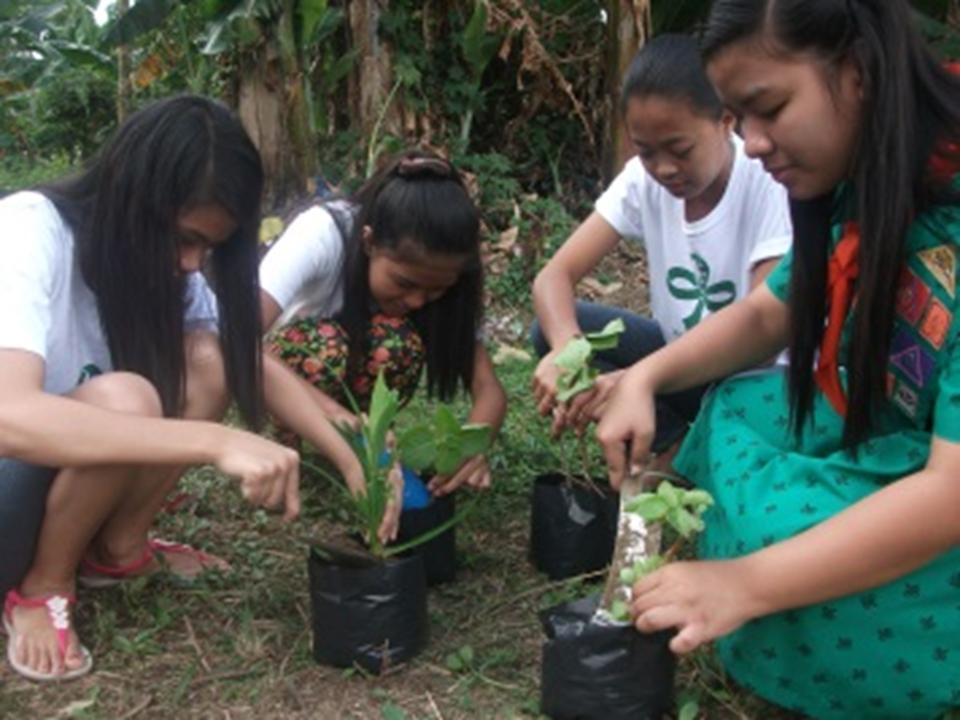
OPERATING GUIDELINES
- An orientation/workshop on the Scheme is conducted by the Council/regional offices for Senior and Cadet Girl Scouts, with their Troop Leaders.
- The orientation/workshop should include common and separate sessions for the girls and their leaders on how to manage the community development project.
Parent’s and Troop Leader’s endorsements should pledge support to the girl.
Time limits are set for each phase. The candidate completes the 12-month period on community development project; implementation of the project should be at least eight (8) months. Should a girl not complete the work within the year, she may continue and finish her work but not to exceed one more year.
Documentation of the activities or the logbook includes plan of activities, proposed budget/phase reports, records of activities, certification, lists of beneficiaries, list of donors, letters, involvement of the community in the project, action photos of the project before, during and after the implementation, application of learning based on research in chosen area of work and a financial report.
The applicant should submit the following:
- Her profile using the attached form with one picture in complete Girl Scout uniform, full body, properly endorsed by the Troop Leader, Council Executive and Regional Executive Director.
- An abstract or one/two-page written summary of the project together with not less than five (5) but not more than ten (10) photos to show the different stages of the project implementation: preplanning, planning, implementation, turning over of projects to the community leaders, evaluation and preparation of reports. Other pictures of the project can be saved in a CD.
- A one-page reflection paper to be attached to the abstract to share the candidate’s personal experience, her significant contributions to the community and the lessons learned in carrying out the project noted by the Troop Leader.
- A soft copy of the logbook in CD format together with the hard copy of the required written reports to the GSP National Headquarters c/o Program Division on or before July 31 of each year. Please note that each chapter of the logbook must have an equivalent folder in the CD for easy access of the files. All logbooks in CD format and written reports received at National Headquarters after July 31 shall be considered in the following year’s screening of the candidates and awarding ceremony.
RESOURCES 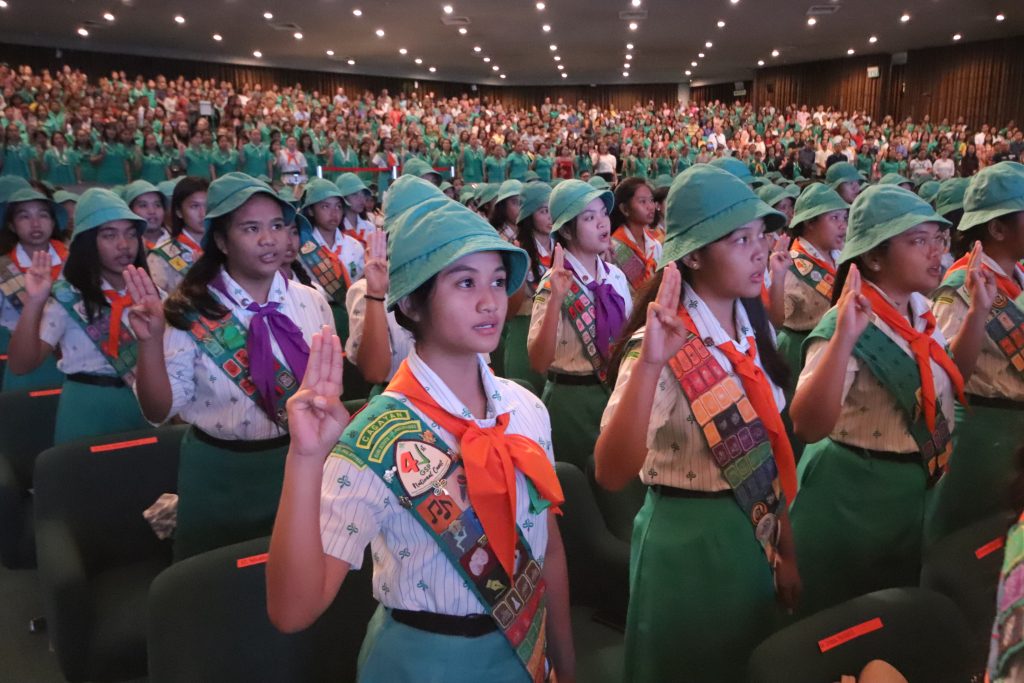
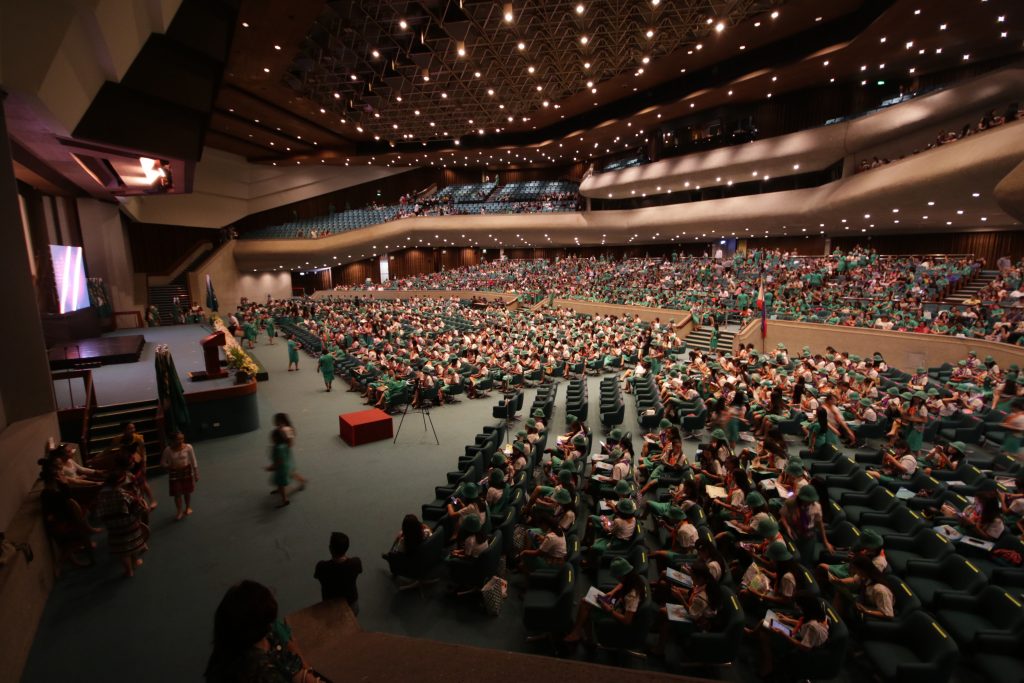
While the Scheme is an individual challenge, a girl may avail of the help from various sources. Amongst these resources are:
- Her Troop Leader
- The Community
- Consultants
- The Girl’s Family
- The Work Group or Patrol
- The Barangay Committee/District Committee/Girl Scout Council
A. The Council’s Responsibilities
- Conducts orientation/workshop and development skills training
- Provides technical assistance through its staff, volunteers, project advisers, and other resource persons.
- Makes available references, forms and other materials to the candidates.
- Assigns people responsible for monitoring projects and sees to it that GSP standards/policies are adhered to and maintained.
- Briefs the evaluators on project assessment.
- Coordinates with the monitoring panel who meets the candidates in September to check on their plans. (Monitoring Reports should be included in the Logbook).
- Helps the troop leader in her work with the candidates.
- Sees to it that all who helped in the project are given due recognition/appreciation after completion of the project.
- Promotes the scheme.
- Schedules the visit of the evaluators to the project.
- Prepares the final Council Evaluation Report.
- Keeps lists of all projects turned-over to the communities and sees to their continuity/sustainability.
B. The Region’s Responsibilities
- Helps councils conduct orientation/workshop if needed.
- Visits the candidate’s project anytime during the implementation of the project.
- Receives and processes phase reports; returns same to the council with their observations/remarks.
- Joins the council panel in the evaluation of the project.
- Receives and processes soft copy of the final logbooks in CD format vis-à-vis requirement.
- Forwards to NHQ logbooks in CD format and written reports that meet the requirements on or before July 31.
C. The Candidate and the Community
- The girl works in partnership with people in the community.
- Identifies the problem or need of the community.
- She helps the community by:
a. encouraging the people in the community to help themselves through a project of their own.
b. assuming leadership role in a group that she organizes for the purpose
c. teaching people, with emphasis on the follow through project after the acquisition or transfer of skills. - She turns over completed project to the community leader/s in a fitting ceremony.
EVALUATION OF WORK ON THE SCHEME PROCEDURES
Monitoring of the project will be through regular inspection visits of the Monitoring Panel (on a monthly or bi-monthly basis).
The Panel of evaluators shall be organized by the council to be composed of:
- the Council Commissioner on Program;
- the Council Executive;
- two members of the community; and
- representative from the regional office
The final evaluation by the panel of evaluators will include:
- interview of the candidate;
- study of documents supporting the project;
- interview with representatives from the community/clients/beneficiaries; and
- an assessment of the project, its effects, relevance and sustainability.
Spot checks and review shall be conducted by the evaluators designated by the National Headquarters. Final processing and approval of documents shall be done at the National Headquarters.
CRITERIA FOR EVALUATION
Personal Attribute – 30% (To be rated by the Troop Leader)
Adequate progress and growth in:
Spiritual and Physical Health
Integrity
Sense of responsibility
Perseverance, effort, determination
Manners and Decorum
Knowledge and Skills
Poise and Grooming
Performance – 40% (To be rated by the Panel of Evaluation)
a. Leadership abilities:
– planning
– organizing
b. Implementation:
– follow through of plans
– networking
– use of resources
c. Documentation:
– completeness of records (neatness, organization and presentation of thoughts, presence of required documents)
The Project – 30%
a. Community Involvement
b. Effect on: – the community – the candidate
c. Sustainability
